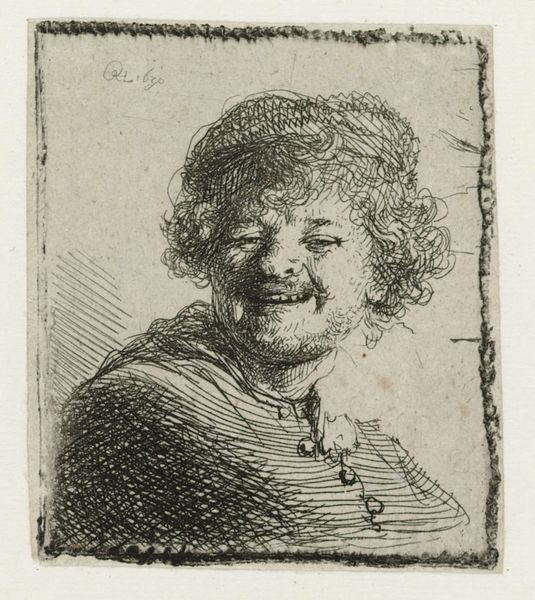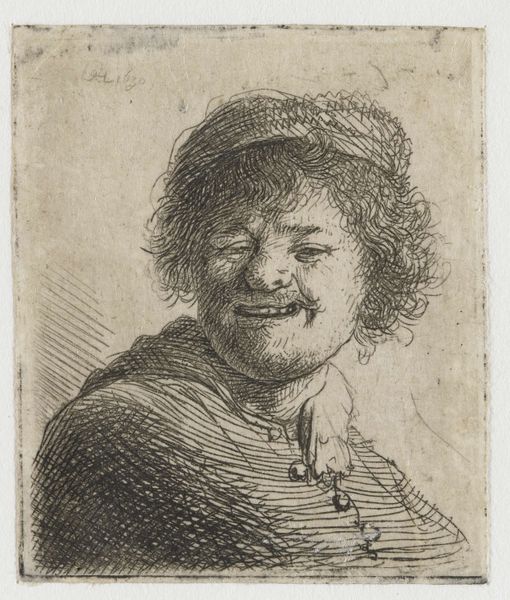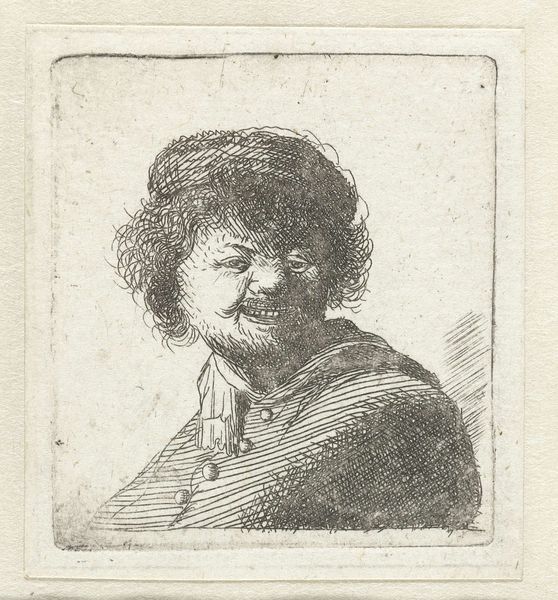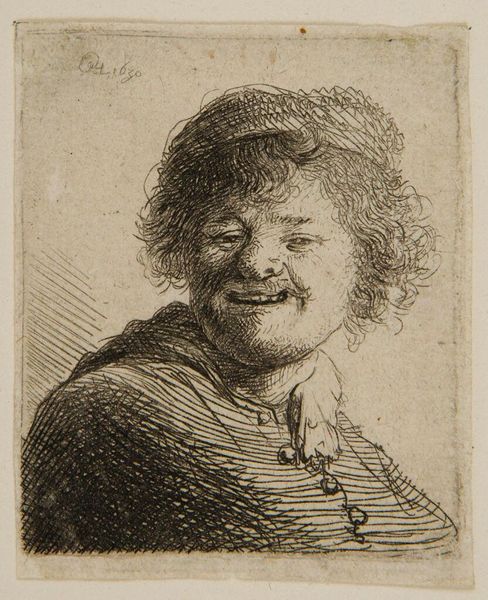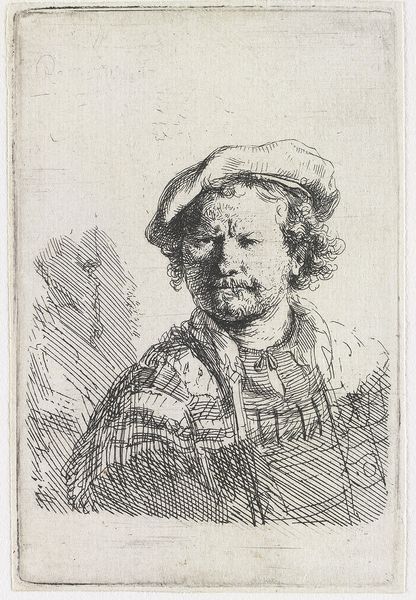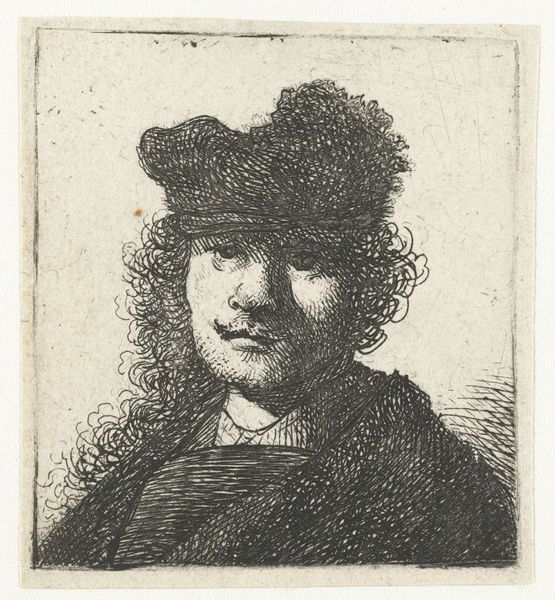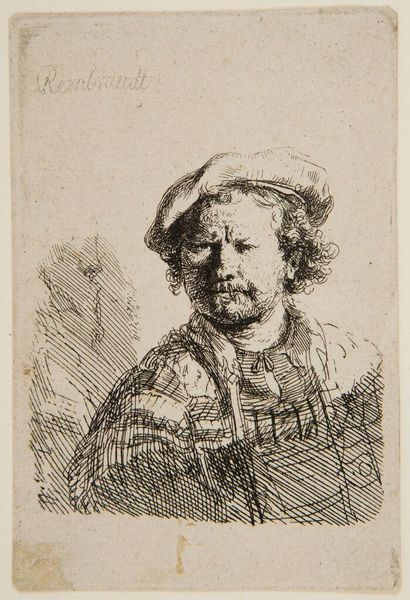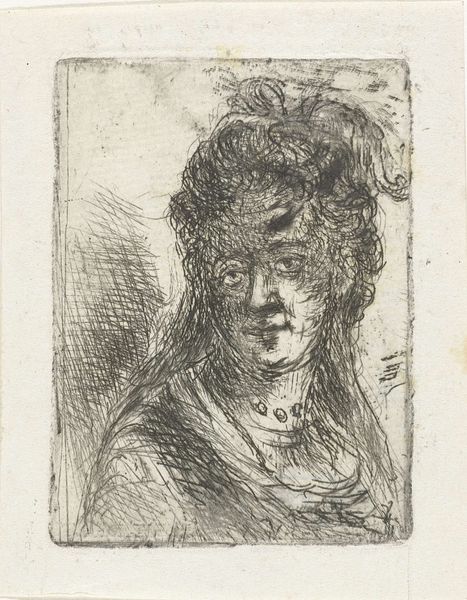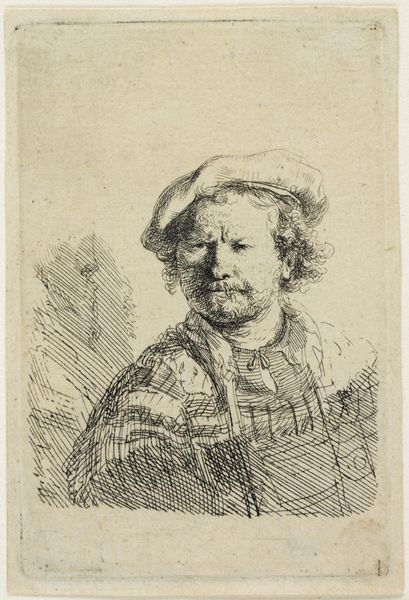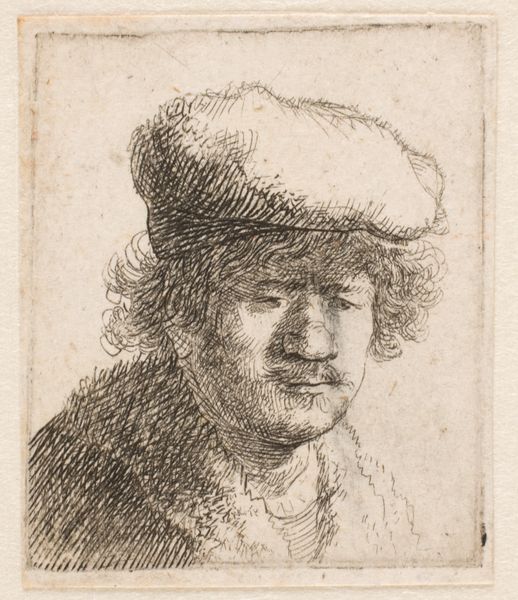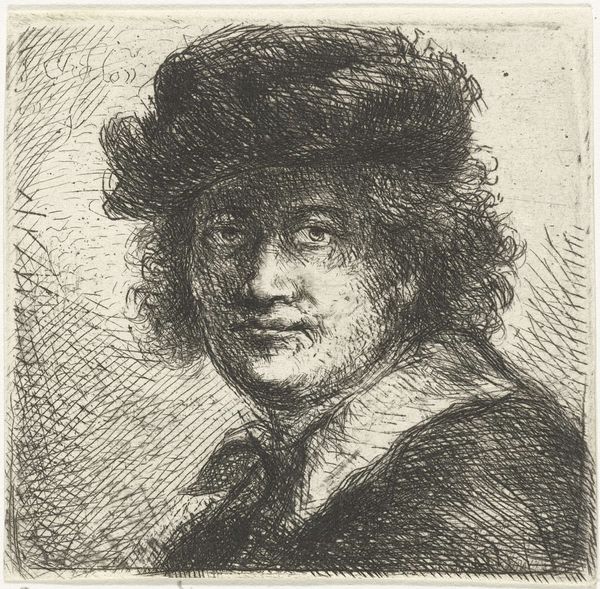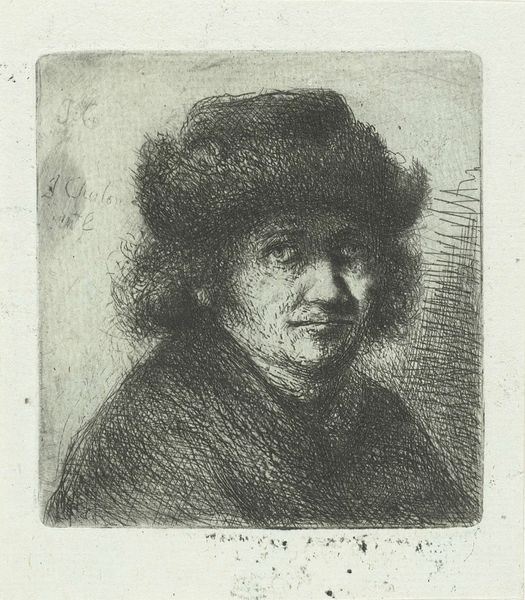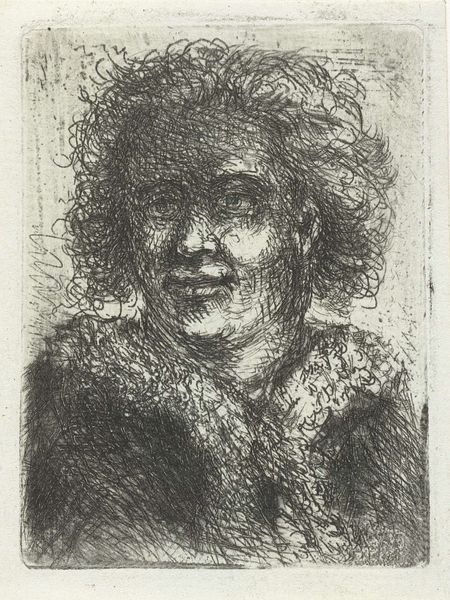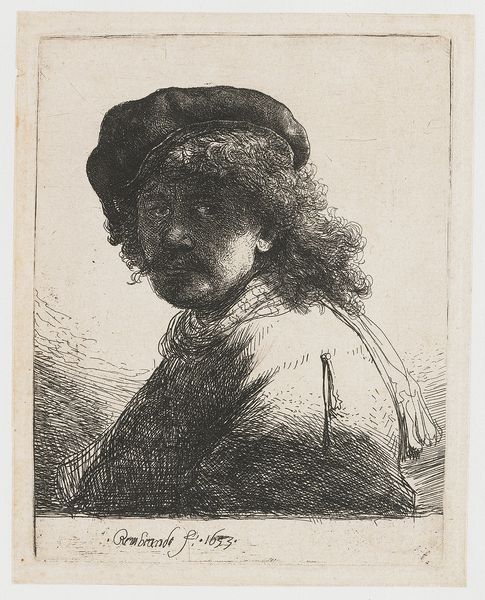
print, etching
#
portrait
#
self-portrait
#
baroque
#
dutch-golden-age
# print
#
etching
Dimensions: height 49 mm, width 42 mm
Copyright: Rijks Museum: Open Domain
Rembrandt van Rijn created this self-portrait using etching, a printmaking technique, on a small copper plate. The network of fine lines composing the image have a crisp, almost industrial quality. The etched line yields a very different effect than a drawing made by hand. To create it, the artist would have covered the plate with wax, drawn into it with a needle, and then submerged the plate in acid. The acid bites into the exposed lines, which are then filled with ink and printed. There's a directness to the image. Rembrandt's laughter seems unrestrained. But the printmaking process required careful planning and skilled labor. The acid bath, the application of ink, and the printing press each demand a practiced hand. Although Rembrandt was a master painter, he turned to printmaking to disseminate his images widely, and perhaps, to connect with a broader audience through a process that, in its own way, was aligned with the emerging industrial processes of the 17th century. It blurs the lines between unique artwork and mass-produced image.
Comments
No comments
Be the first to comment and join the conversation on the ultimate creative platform.
